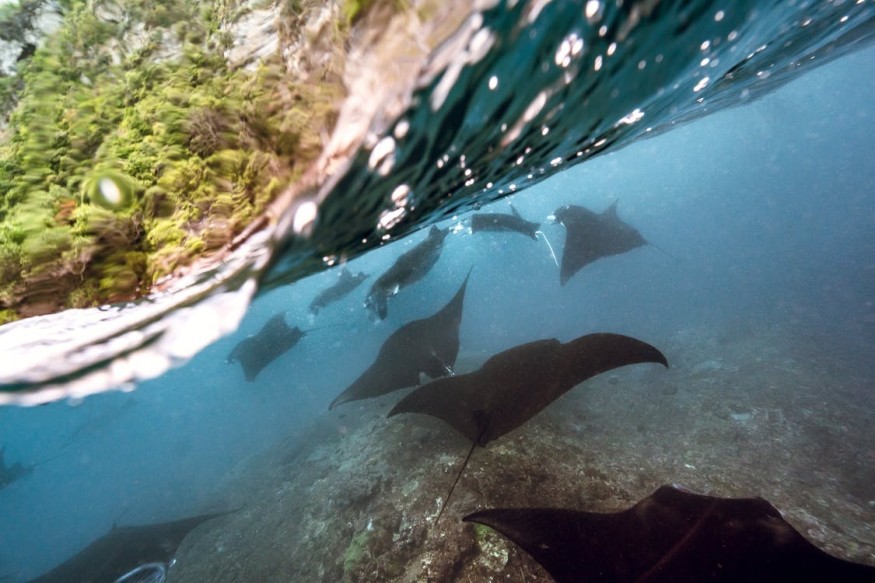For the first time, more than 1,000 manta rays have been discovered dwelling in the seas of a tropical paradise in Indonesia, providing optimism for the beleaguered species' future.

More Than a Thousand Manta Rays
More than 1,000 manta rays have been seen in waters near Indonesia, providing optimism for the beleaguered species' survival. The study was published in the peer-reviewed journal PeerJ.
For the first time, scientists calculated the number of rays off the coast of Komodo National Park, a UNESCO World Heritage Site where the species is a popular tourist draw.
They believe the location might be crucial to the regional recovery of rays, threatened mainly by commercial fishing.
The International Union for Conservation of Nature (IUCN) Red List reclassified the gigantic manta ray's conservation status to 'endangered' in December.
Global Efforts
As part of a five-year study effort, scientists from the Marine Megafauna Foundation (MMF) and Murdoch University in Australia collaborated with the general population.
Reef mantas (Mobula alfredi) live and feed in shallow coastal settings, growing up to 16 feet (5 meters). They also go to coral reef 'cleaning stations,' where little fish clean off parasites and dead skin.
Cleaning stations are also home to courtship 'trains.'
Manta rays may be seen all year in Komodo National Park, vying with the legendary Komodo dragon for the title of most sought-after megafauna by visitors.
Researchers collaborated with the park's dive operator community to collect identification photos of manta rays in the park's waters and upload them to MantaMatcher.org, a crowdsourced online database for manta and other rays.
The majority of the photos were taken at just four of the more than 20 popular tourist destinations. The distinctive and occasionally spectacular abdomen markings of individual manta rays help identify them.
Intensive Research and Collaboration
Dr. Andrea Marshall, MMF's main scientist and co-founder recognized an opportunity to include the general public in data collecting for the endangered marine critter.
She collaborated with the software startup WildMe to create an online wildlife database platform that allowed her to match and categorize manta rays from various populations across the world.
'Manta rays are one of the most iconic species in our seas,' said study co-author Dr. Marshall.
The pictures and supporting time and position data were utilized to create individual manta ray sighting records, then analyzed using statistical movement models.
According to the findings, some manta rays traveled about the park, while others traveled as far as the Nusa Penida MPA, almost 270 miles away.
However, manta rays revealed distinct preferences for different parts of the park. Since 1984, fishing has been prohibited in several coastal regions of Komodo National Park, including manta ray habitats, providing some protection.
However, experts suggest that the species continues to be threatened by fisheries owing to illegal fishing and manta ray migrations into intensively fished seas.
In Constant Risk
According to the study, about 5% of Komodo's manta rays suffer persistent injuries resulting from interactions with fishing gear.
Throughout the study, the attractiveness of Komodo National Park for tourism expanded, resulting in a 34% rise in tourism boats visiting manta ray areas.
Increased watercraft activity and excessive diving and snorkeling can be harmful to manta rays and their habitats.
The Komodo National Park Authority set limitations on the number of boats and people allowed to visit one of the most well-known manta spots in 2019.
The study team provided additional recommendations for improving manta ray conservation inside the National Park, which might be used as standards for manta ray habitats across the world.
Related Article : Dolphin Population Becomes Extinct After Last Member Got Entangled in Fishing Gear
For similar news, don't forget to follow Nature World News!
© 2026 NatureWorldNews.com All rights reserved. Do not reproduce without permission.





